
Topics
With the Elian Gonzalez story in the headlines every day, the image of Cuba on our TV screens is that of a mainly white population–Elian and his family, the Miami Cuban exile community, and President Fidel Castro himself. [includes rush transcript]
So many people may not realize that Cuba is an overwhelmingly black country–as much as 80 percent, by some estimates.
Democracy Now! producer Maria Carrion recently spent time in Cuba and recorded a series of conversation by Afro-Cubans on race and racism.
The issue of race in Cuba is a complex one; some say that there are as many opinions about race as there are Cubans. Cuba is a racially mixed society, with more flexible and ambiguous racial identities and definitions–unlike the United States, where one drop of black blood has historically defined a person as being black.
Although the revolution promised to bring social equality to all Cubans, many Afro-Cubans say that racism still permeates society. And with the rise of the two-tiered tourist economy, one in which Cubans with access to dollars have a clear economic advantage over those who do not, racial inequalities are more sharply visible than ever.
Even to the casual observer, it is quite apparent that coveted jobs in the tourist industry–such as hotels, travel agencies and restaurants–are mostly held by non-black Cubans. Yes, there are some black Cubans–but they are likely to be working as cleaners or porters, for example.
Although racism was never legislated in Cuba–even before the revolution–stories abound about non-legal segregation. Along Havana’s seafront, bathhouses used to separate blacks from whites. And Copelia, Cuba’s famous ice cream parlor, was built a few years after the revolution after complaints that ice cream stores would not allow Afro-Cubans in.
Tape:
- Conversations With Afro-Cubans, taped by Democracy Now! producer Mara Carrion.
Related link:
Transcript
AMY GOODMAN:
Well, Kwame Dixon, thank you for giving us this update, an insider’s look at a White House meeting that took place this past week and a meeting that we will increasingly deal with on Democracy Now! and I hope the mainstream media will take it up, as well. You’re a human rights activist and scholar, a consultant to human rights groups, including Amnesty International, and I should also say that you are the husband of our producer, Maria Carrion.
And this brings us to the second half of today’s program, and Maria will be joining us, as well. You both just finished a trip to Cuba in the midst of the Elian Gonzalez scandal, and one of the issues that you were looking at, or a particular area you focused on, was the issue of Afro-Cubans and race and racism in Cuba.
We have come to see Cuba through the face of a little six-year-old boy named Elian Gonzalez, a white face, and Maria, welcome to Democracy Now!, as well. She’s not usually on the mic, but has been bringing us these series from Cuba and also from Elian’s hometown, Cardenas in Cuba. Elian’s face is not the typical face of Cubans.
MARIA CARRION:
That’s right, Amy, nor is Fidel Castro’s face, for that matter, who is also, at least in appearance, white. His father was from Spain, from northern Spain. Many people may not realize that Cuba is an overwhelmingly black country, as much as eighty percent by some estimates, and the issue of race is a very complex one.
From my many, many conversations with Cubans when I was there, it seemed that there were as many opinions about race as there are Cubans. Cuba is a racially mixed society with very flexible and sometimes ambiguous racial identities and definitions, unlike the United States, where one drop of black blood has historically defined a person as black.
In speaking with black Cubans, though, I came away with a strong impression that, despite the Revolution’s promises to bring social equality to all Cubans, racism still permeates many sectors of society, and this is especially true with the rise of the two-tiered, dollarized tourist economy, one in which Cubans who have access to dollars have a clear economic advantage over those who don’t have dollars, and these are a very small minority.
And even to the casual observer, and as we will hear some of these people comment, it’s quite apparent that some of the — most of these coveted jobs in the tourist industry and hotels and travel agencies and restaurants are mostly held by non-black Cubans, and when you do see black Cubans in the tourist economy, they are usually holding the lowest positions, such as cleaners or porters. We traveled extensively through Cuba over the course of almost three weeks, and we saw a great many examples of that. This is anecdotal, but we’ve also exchanged impressions with many people, as well, who have said the same thing.
And although racism was never legislated in Cuba, even before the Revolution, stories abound about non-legal segregation along Havana’s seafront, for example, known as the Malecón. Bath houses used to separate blacks from whites with signs. And Coppelia, Cuba’s most famous ice cream parlor and the site of a famous Cuban movie called Fresa y Chocolate, or Strawberry and Chocolate, it was built a few years after the Revolution, after complaints that ice cream stores would not allow Afro-Cubans in. This is even after the Revolution.
So I decided, when presenting this story, that I would start with the twin institutions of slavery and colonialism that created racism in Cuba, so we begin with a tour of the Iznaga Plantation. It’s a nineteenth century sugar plantation owned by the Iznaga brothers from Spain, Basque brothers, two of the wealthiest people in Cuba at the time in the nineteenth century. It’s located in the Valley of the Ingenios, the valley of the sugar plantations in Trinidad, on the Caribbean coast of Cuba, and one of the employees of that plantation, which is now a museum, took me on this tour, and I will be translating as he goes.
IZNAGA PLANTATION EMPLOYEE: [translated] Welcome to the Iznaga Plantation, built in 1815 by two brothers from Spain. They owned practically the whole Valley of the Ingenios, and most of it was for the production of sugar. They constructed a tower. As you can see, it has three bells, a large, a medium, and a small one, and there, they played the bells using codes, and this tower was used to watch over the slaves. You had a slave overseer that was on top of the tower, and he would play the bells according to what was happening. For instance, when the medium and small bells rang, it meant that there was a slave uprising. They would set fire to the cane, and they would flee. And when it was the large and the medium bell, it meant a slave was running away, which we call the Maroons. And they would go seek the slaves after they had fled.
There were about 1,200 slaves in these plantations, and 375 slaves right here. Eighteen slaves died in the construction of this tower. The conditions were very cruel.
We get most of our stories from the old people, who heard it about their parents, so we ask them about our own history. The slaves would cut cane. They would work on the trapiche to extract the juice and make it into sugar. Some of the women worked in the house as servants. Other slaves handled the oxen. There was always an overseer with a whip. That’s why many slaves would flee, because they were so badly whipped. They would get the slaves from the Congo. We’ve heard they were brought here on ships. It was a very difficult journey. They were brought chained, and many of them arrived dead.
MARIA CARRION: I ask him about after the abolition, what happened to the people who used to work here in the plantations.
IZNAGA PLANTATION EMPLOYEE: [translated] And he says, yes, many people are still left here, and they still have the same last names, Iznaga and Borrell. Even some of the workers in our restaurant are descendants of these slaves.
MARIA CARRION: So I was told about one of the descendants, a man of almost 100 years. I head down a dirt path behind the mansion to a series of little huts. In one of them lives Tomas Iznaga, whose parents were slaves and worked on this very plantation. He and his youngest daughter Maria still live on the plantation grounds.
TOMAS IZNAGA: [translated] Tomas Iznaga, Tomas Iznaga is my name. I am ninety-nine years old. My family worked in the fields, and, yes, I descended from slaves.
MARIA CARRION: I ask: what would you do — what would they do when you worked in the fields? Maria helps me to convey the message.
TOMAS IZNAGA: [translated] I was very young, and all my family worked in the fields. They would cut cane, and they would work on the trapiche, extracting sugar. We would make sugar, he says.
MARIA CARRION: And I ask: what do the family live from now?
TOMAS IZNAGA: [translated] We all work.
MARIA IZNAGA: [translated] And Maria says, everyone has a job now. There are drivers. There are teachers. Some of them work in the Ministry of Interior. They are all integrated into the government.
AMY GOODMAN:
Some of the Afro-Cuban voices of the island that we are hearing so much about today. When we come back, we’ll continue with Maria Carrion’s report from Cuba. You’re listening to Pacifica Radio’s Democracy Now! Back in sixty seconds.
[break]
AMY GOODMAN:
You’re listening to Pacifica Radio’s Democracy Now! I’m Amy Goodman, as we continue with Democracy Now! producer Maria Carrion’s report from Cuba. Maria?
MARIA CARRION:
Well, Amy, perhaps the most poignant discussion that Kwame Dixon, my husband, and myself, when we were in Cuba, that we had about race in Cuba took place in a tiny one-room apartment in Old Havana with a group of young Afro-Cubans. Their names were Jose, Randy and Victor. All three were part of Cuba’s informal economy, although they had all studied beyond high school. And this is what they had to say. Kwame translated.
JOSE: [translated] My name is Jose. My mother is white. My father is black. I have dreadlocks, but in this period I more identify with my African tradition and heritage.
VICTOR: [translated] My name is Victor. I am also Afro-Cuban, but here they say that I am a mulatto, but I don’t think that, because I am black. I identify with being black 100 percent, 100 percent, and I want to be as black as I can be.
RANDY: [translated] My name is Randy, and I identify with blackness. And I identify with the ghetto, and I identify with my African roots. For almost ten years now, I began to identify with these issues, and I come from a family of campesinos, of peasants. In my land, where I’m from, the black people don’t identify with being black. The black people identify as being white. But here in Havana, more and more black people are identifying with their blackness. More and more black people are identifying with their African-ness. For the past few years, I’ve had a chance to learn a little bit more about Martin Luther King and more about Malcolm X, and recently about Mumia Abu-Jamal.
MARIA CARRION:
What do you know about Mumia Abu-Jamal?
RANDY: [translated] Here, through tourists who I’ll speak with, that’s how I know a little bit about this, but because here in Cuba we get very little information, but I did see one minute of radio or TV where they talked about it. For us here in this small group, Mumia signifies a flag, a struggle for anti-racism. And I’ve also had a chance to read his book, Live from Death Row
, a book written by Mumia Abu-Jamal. And it was here where I read about this, and I began to hear about or learn more about the situation of blacks and Latinos in the jails in the United States. In the name of all Afro-Cubans, we want to say that we back Mumia and that we are totally against his execution.
MARIA CARRION:
How would you compare the struggle against racism in the United States with the struggle here in Cuba against racism? This is Victor.
VICTOR:
I will try to speak in English, OK? It will be easier. For example, in Cuba, we can’t talk about races, you know, because we live in a social system, socialism, and there is no races. Everybody is equal. And that way, people don’t care about races in Cuba. So we, like for example, we three, we learn about it, and we know about the struggles in the United States, and we will like that in Cuba we can make a movement like in the United States, but here it’s impossible. If we even talk about it in the street, we can have problems with the government. We can’t do that.
MARIA CARRION:
What are the main problems with racism in Cuba that you’ve experienced?
VICTOR:
Now, the main problems with the black people are in the economy. You know, the best jobs, the jobs in tourism, are just for white people, and all the, all the — everything, everything in the economy is just for white people. People in the government, people in the parties, they are always white, you know? So sometimes they put some blacks, but it is just fachada.
MARIA CARRION:
A façade.
VICTOR:
Façade. It’s just a façade, you know.
MARIA CARRION:
What happens when a black Cuban tries to get a job in the tourist sector, for instance, in a hotel or in a shop, a dollar shop, anything that has to do with tourism? What is the usual treatment?
VICTOR:
The usual treatment is to have a connection, like a family or a friend, but in the other hand, they have to have a lot of money to get a job. I talk about tourism, because now it’s the principal economy in Cuba, and everybody want to work in tourism. If I go to try to get a job there, it will be impossible, but is any girl, for example — I talk about women now — there is only white beautiful women, but if there is any black women, she has a connection, or she is a girlfriend of the manager or something.
MARIA CARRION:
What kind of jobs do black Cubans have access to in Cuba? What kind of work?
VICTOR:
The worst. The worst, like construction, cleaning, cleaning enterprises. The worst, the worst. When we can see it, we can see it, because when we walk in the street, there is a lot of policemen. They are in every corner, so they stop just black people, black people. Even the black policemen, they just stop black people.
MARIA CARRION:
And what happens if you try to denounce this kind of racism in Cuba? What happens?
VICTOR:
What happens? Nothing. Nothing, because we cannot talk about it, because they will say that I’m crazy. I’m crazy, because in Cuba there’s no racism, you know? And if I try to explain more, I will be in trouble. Maybe I can go to prison for being anti-Communist.
MARIA CARRION:
Jose, what do you think happens to people who try to denounce racism? And talk a little bit about whether there are any organizations here in Cuba that try to deal with racism.
JOSE: [translated] As he just said, here, this is not allowed, because here we’re not even allowed to use the word “racism.” And also I think there can be no groups that fight against this. So if you talk about racism in the ghettos, the people will support you, but as soon as the police find out, they can get in trouble. And if we try to do this in the politics, the problem is that in the political arena they are white, and the whites will say we don’t want to discuss this.
MARIA CARRION:
That was Jose, Randy and Victor. We spoke in a tiny one-room apartment in Havana, where they all lived. These are the tiny, tiny living quarters that very poor people, black people, live in Havana, and this is what they had to say.
Another person I spoke with was the owner of a paladar, a clandestine restaurant. A lot of them have sprung up around Havana with the tourist economy, and I spoke with the owner, who was also black.
AMELIA: [translated] My name is Amelia [inaudible]. I have a paladar. We specialize in lobster and seafood. We would like to be legalized, but we are not yet. We have not received our permit. I survive on this. I don’t live well, but I have a nine-year-old, and I am able to feed her.
MARIA CARRION:
I ask her, my friends who brought me to the paladar said that there are very few legalized black paladars, that most of the ones that receive the legality are white.
AMELIA: [translated] She responds, well, this man who is the mayor, he has his clan, and we do not fit inside his clan.
MARIA CARRION:
I ask, what do you mean “us”?
AMELIA: [translated] She said, nosotros, us, the blacks. There are whites who only familiarize themselves with other whites and other people who mix races, but in his case, he only does favors to whites. For instance, the woman next to me, Donatilia, she has a paladar she is about to legalize, because her patron is white. Why does she get legalized, and not me? And if you see, in the tourist industry, you will not see one black face. The only black people you see are cleaners, but all the people who are showing their faces are white — not only white, but beautiful.
MARIA CARRION:
I ask, do you think the Revolution forgot about blacks?
AMELIA: [translated] She responds, not really the Revolution, but those who are within the Revolution who establish these hierarchies. They’re the ones who forgot. Because Fidel is black, after all, she says.
MARIA CARRION:
I said, Fidel is black? He said he’s black?
AMELIA: [translated] She said, he doesn’t have to say he’s black. He looks black. She says, it’s really an artificial hierarchy that creates racism here. There’s always a difference, she says, in the system. There’s always a place beyond which we cannot go.
MARIA CARRION:
I ask, how can Fidel be black?
AMELIA: [translated] She says, well, look at his hair. He’s mulatto. He has curly hair. I’ve never met him, but I think he must be part black. Mulatto and from Oriente. But then she adds, let me tell you that black people can be more racist than whites.
MARIA CARRION:
I ask, what do you mean?
AMELIA: [translated] She says, because when they’re in higher-up places, they have to be racist, because they have to prove that they’re white. They believe that they’re white, and he forgets about his own skin. She says in the cuna, there are police. When a black person goes by, they ask for his identification much faster than a white person, and if the black person goes by and he’s wearing chains and nice clothes, they’re definitely going to ask for his I.D., much more so than a white person.
AMY GOODMAN:
Well, Maria Carrion, bringing us these conversations from Cuba. And in this last minute, I want to thank you and Kwame Dixon for these conversations. Kwame, you had your own experience in Cuba as an African American with dreads. What happened?
KWAME DIXON:
Well, I was walking through Havana one day. I wanted to take some photos. It was in the evening. And there was a disturbance, and I followed this crowd of people to this disturbance, and at the disturbance, the police walked over to me and said, “Where are your papers?” And I said, “What papers?” They said, “Well, where are your documents?” I said, “I don’t have any documents. This is the middle of the day. Why do I need documents?” He said, “No, you need documents.” I said, “No, I don’t have them.” He said, “Well, we’re going to have to take you down.” I said, “Take me where?” He said, “Well, you don’t have documents.” I said, “Well, I don’t need any documents, because I’m fine,” and as a result, what they said is — they took me down to the police station, because they said that I was an Afro-Cuban imitating an American. And I said, “Well, if that’s the case, I’m the smartest Cuban in Havana.”
AMY GOODMAN:
Well, I want to thank you both, Kwame Dixon and Maria Carrion, bringing us the voices of Afro-Cubans in Cuba, which is, despite the pictures of Elian Gonzalez and his family, overwhelmingly a black country.


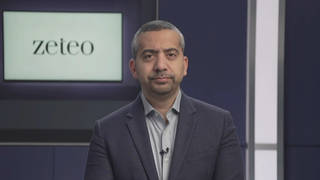
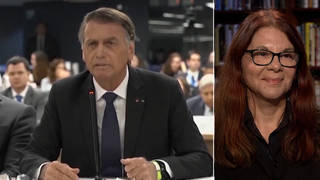
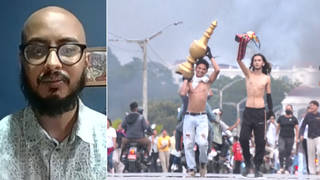
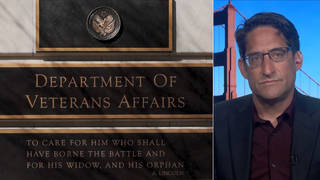
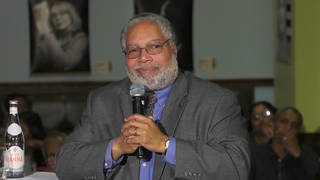
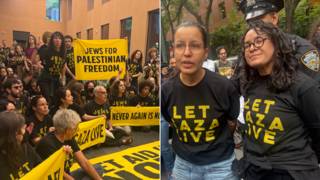
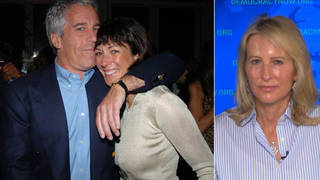

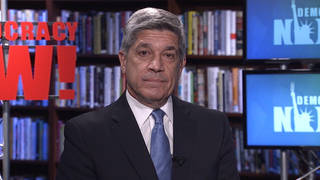
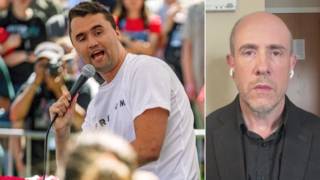
Media Options